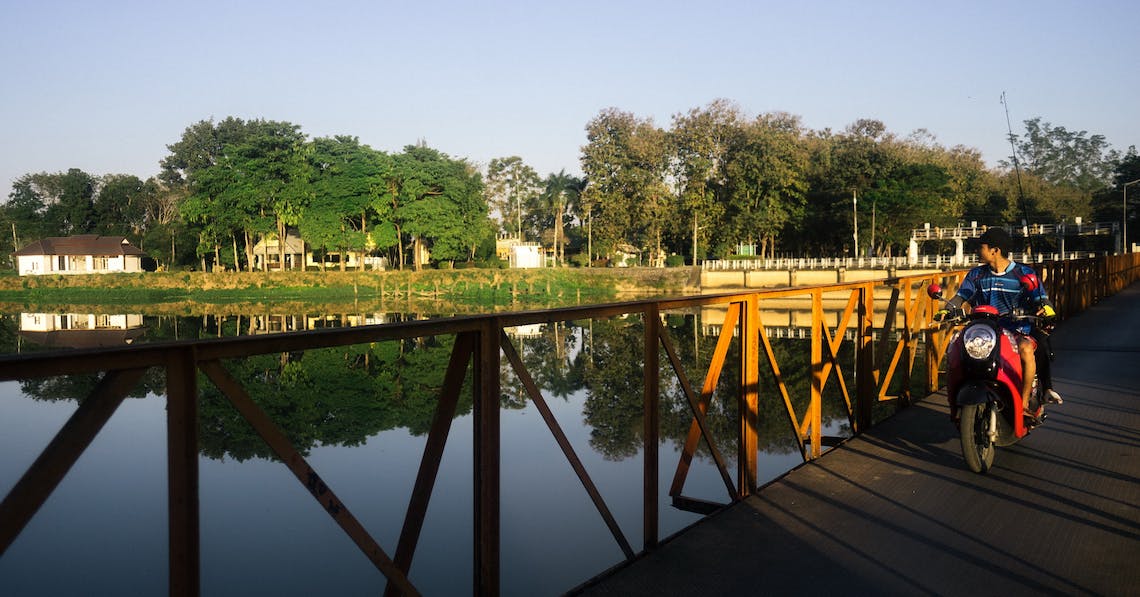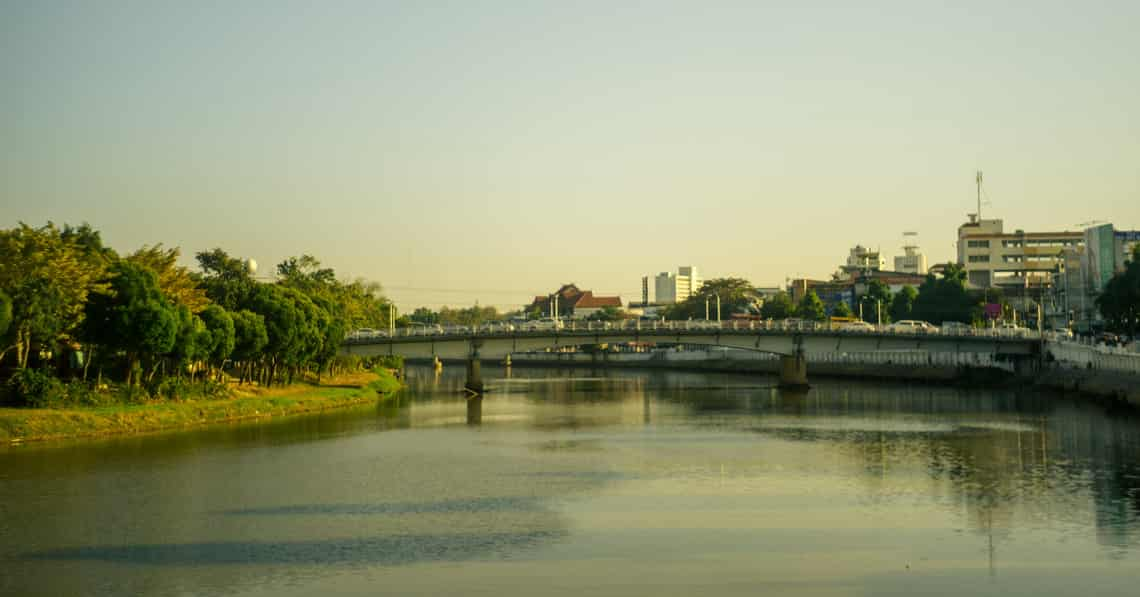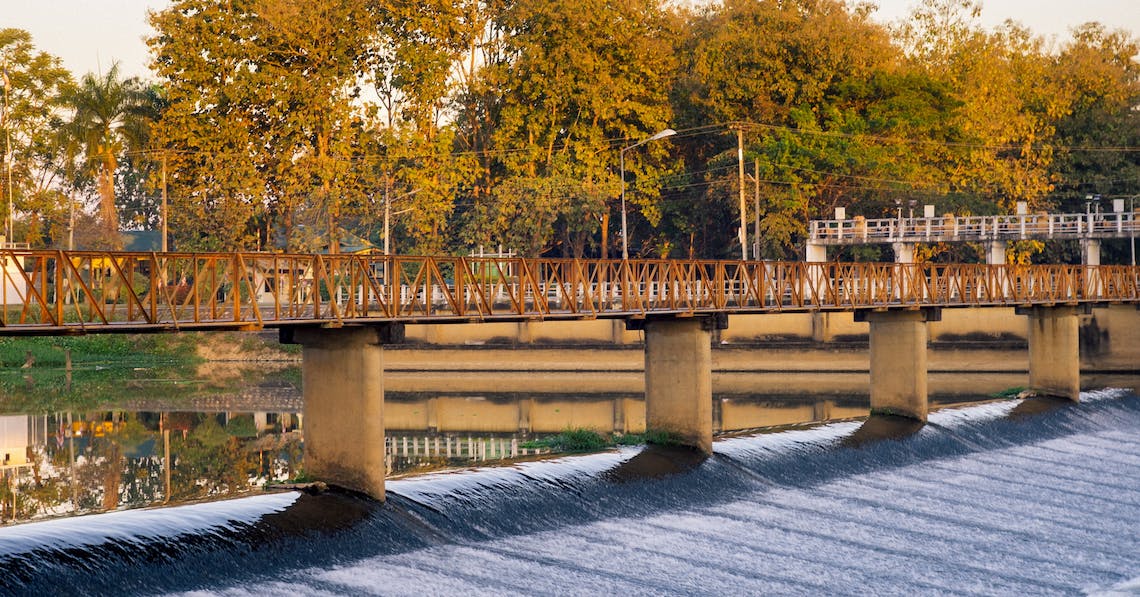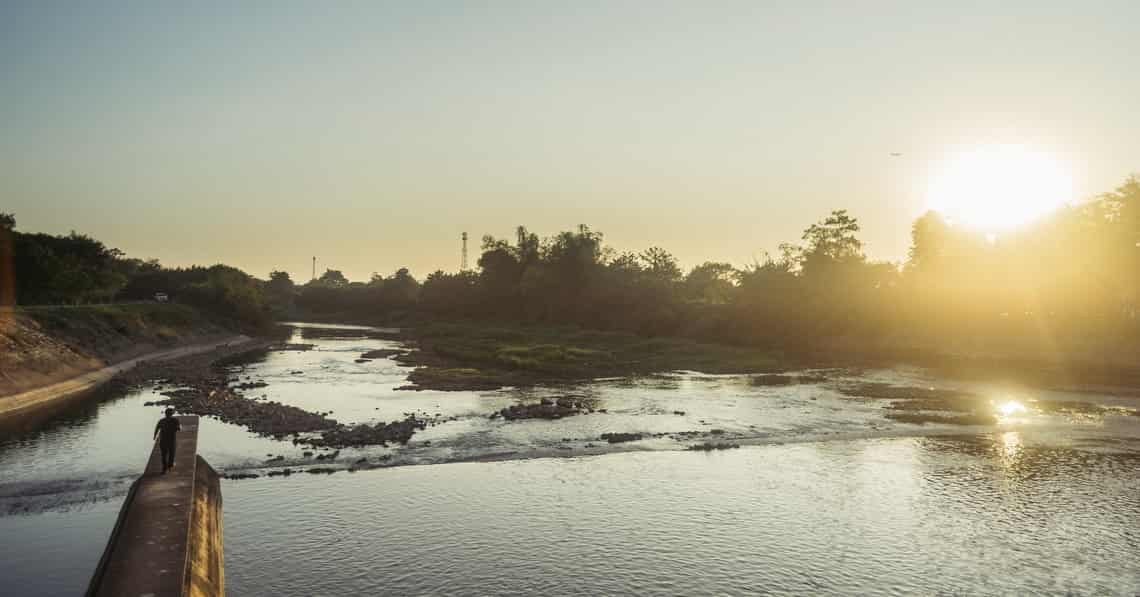Every day thousands of people pass by or cross over the Ping River in Chiang Mai without giving it a second glance. But for a dwindling number of people, the Ping is as important today as it was when King Mengrai likely made it the deciding factor for choosing this spot to found Chiang Mai city in 1296.
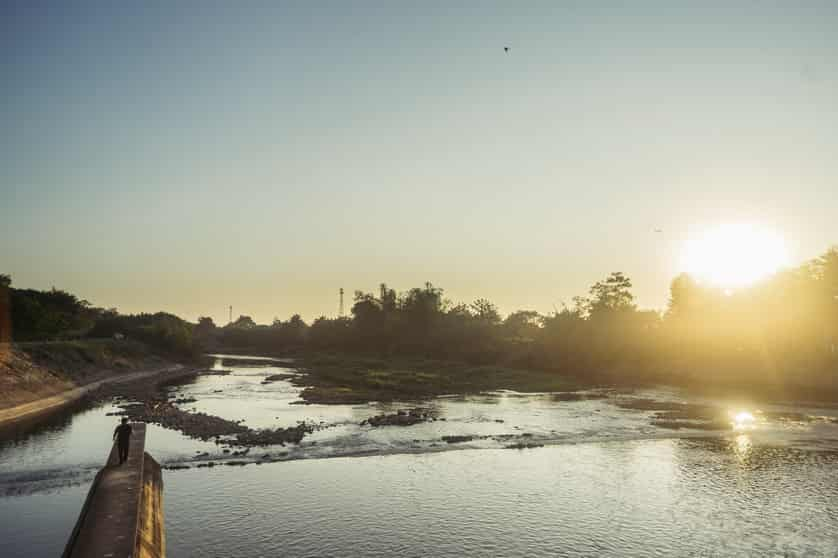
Gaze at it long enough and you will see some signs of life; small boats meander up and down the water and a few locals throw their fishing nets hoping to earn some keep that day. Fish farmers wake up and check on their tilapias and the irrigation department plans the next week’s water supply. Under water, the fish, eels and shellfish hunt and breed while trying to avoid raw sewage where algae begin to bloom. This is the life of the Ping River and it’s something most of us take for granted — but without it Chiang Mai would not be what it is today, or even exist at all.

The Ping, along with the Wang, Yom and Nan rivers of the north join together to form the Chao Phraya River which then flows through the heart of Bangkok, spewing out into the Gulf of Thailand. Though often unnavigable, it was up and down this liquid route that people travelled between north and south for hundreds of years. It would take Daniel McGilvery, the first missionary to the north, three months to arrive in Chiang Mai from Bangkok on the Ping River in 1867.
“Evidence of life along the Ping River can be dated back to over 3,500 years ago,” explained Kriangkrai Paisankereemas, a guide and historian at the Chiang Mai City Arts and Cultural Center. “The first recorded settlers were the Lawa people who were then replaced by the Mon, who founded the first known city in the region, Hariphunchai (modern day Lamphun) in the eighth century.”
Several centuries later King Mengrai, a ruler and conquer from China’s Xishuangbanna region, turned his eyes to the south and, in a bid to control the trade routes and create an alternative ‘silk road’ along the Ping River itself, captured Haripunchai in around 1281. Following his successful conquest, he created Wiang Kum Kam as his capital before abandoning it following nearly a decade of Ping floods, to finally move a handful of kilometres north to found Chiang Mai in 1296.
The Ping River was of great importance to local merchants who piloted scorpion-tailed boats south towards the central plains, carrying forest products that would be traded and exchanged for salt, dried fish, clothing, tools and other products that would be taken back to Chiang Mai and traded with land-based merchants who would then distribute the goods via oxen or horses over the difficult mountainous terrain. “The scorpion-tailed boat was designed to navigate the rocky Ping River,” explained Kriangkrai, “because in those days the river was a lot wider and shallower.”
Communities living along the Ping River would fish and grow crops such as rice, living in traditional Lanna stilted houses to avoid the annual floods. Rice was grown year round thanks to the luk, a waterwheel that moved water into the fields via a network of bamboo tubes or canals which then channelled water to communities and farms across the area.
“The old city moat used to be filled by river water,” continued Kriangkrai. “Water would enter the moat at Hua Lin corner, and flow around the city to the southeast corner where it would follow a small canal back to the river. That corner is now called Katam, named after a fish trap used to catch the thrashing fish stuck in the corner.”
Industrialisation of the Ping

By the turn of the 20th century, Chiang Mai and the Lanna Kingdom was in the hands of the Siamese. Chinese and foreign investors flooded the area, all in search of lucrative teak wood and trade deals. Missionaries came and built Chiang Mai’s first church along the eastern bank of the river, an area set aside for foreign residents by the ruling government who occupied the safer, flood-free western banks. Land along the banks, even its islands, were being repurposed, such as a small island in the river that was donated to an American missionary Dr. James McKean by Chao Inthawarorot Suriyawong in 1907 to become a leper colony. With no cure for leprosy until the 1980s, lepers found relief in their sanctuary from social condemnation, many of whom remain at the McKean Rehabilitation Centre today.
Roads began connecting Chiang Mai to the central plains and by 1921, the railway had blasted through Khun Tarn mountain to Chiang Mai, shortening the journey from Bangkok by months. Boat travel became obsolete.
A Dammed Era
Before the construction of Mae Ngat Dam in 1985, there was an annual rhythm to the Ping River. In summer, children would frolic in the river as the water levels would get so low it was possible to walk across from Wat Gate to Warorot Market and hardly get your knees wet. Then when the monsoon rains came, furniture would be moved and boats taken out of sheds in anticipation of the bloating to come, as brown flood water seeped out, sometimes kilometres beyond its banks. Slowly over the next few decades the Royal Irrigation Department built more weirs, canals and water gates while also sealing up the banks of the rivers with walls, reshaping the Ping’s natural course, and rhythm, forever; deepening and narrowing the river as it flows through the city.
“I remember a time when villagers used to row boats and go fishing and collect morning glory before heading into the city to trade,” reminisced Phra Kuwisit Sirapon, Abbot of Ping-side Wang Singh Kham Temple in Pa Daed. “Now that’s impossible because of the weirs — nobody can move around anymore so life on the river has suffered.” Today, the river is almost void of boats, with just a few row boats locals use to fish, the odd canoe and a handful of replica scorpion-tailed boats ferrying tourists from sight to sight. Talapia farming has replaced fishing for all but the hardy hobbyist.
“I get young tilapia fish from a farm that I keep in nets until they are fully grown,” explained 42 year old fish trader called Chayaphreuk. “I was born on the banks of the river and have been working with fish all my life. I had to switch to farmed fish when the rivers became less abundant, but even now many of my fish don’t survive. The more the city grows, the more waste and sewage is pumped into the river, killing my fish or poisoning them to the point that they are unsellable,” he said.
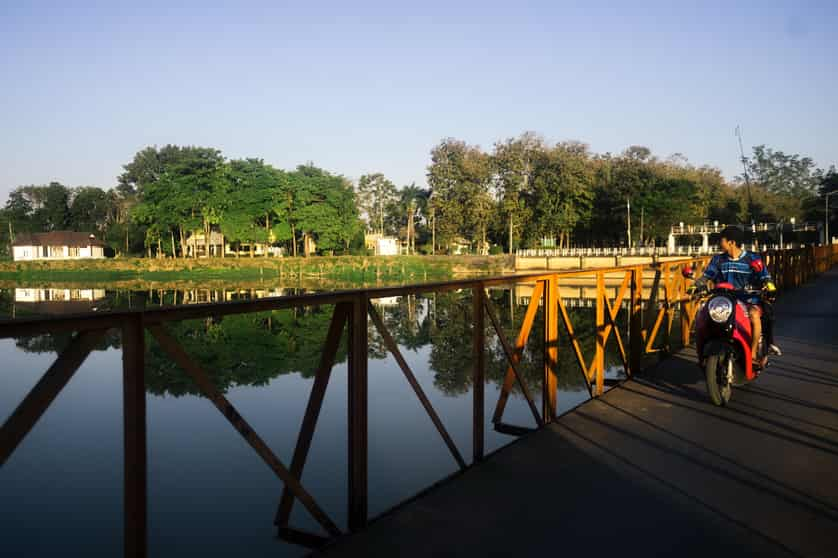
“The two biggest problems that the Ping River is facing today is drought and waste water,” said Apiwat Poomthaisong, director of Irrigation Office 1, Chiang Mai. “Although it is illegal to release sewage into the river, more and more homes and businesses are doing it. One of the reasons for this is that there are too many departments involved – we manage the water ways, but it is the Ministry of Natural Resources and Environment and the local municipality who are in charge of finding and prosecuting the offenders. In the meantime, when fish farms are being poisoned or raw sewage builds up along a riverbank, it is our responsibility to help remove it by releasing more water to help reduce the concentration and flush it away — something that becomes especially difficult during a drought.”
Driving down along the banks of the river, the effects of the growing city on the Ping becomes clear. The newly-built walkways along its banks are often unnavigable due to the pungent stench of urine and garbage, the river banks are often collection points for rubbish dumped further upstream and the river itself is often blackened and foaming with raw sewage.
“The Mae Ping River Cruise has been around for over 20 years,” explained a guide as he kick-started the engine of a teak scorpion-tailed boat leaving Chai Mongkol Temple. “The owner used to do tours of the Saen Saeb Canal in Bangkok before it became too polluted, maybe that will happen here one day but until then we hope to keep educating tourists about the importance of the river and its history.” The cruise travels one hour upstream, with guides pointing to an eclectic assortment of attractions ranging from the royal holiday home of HRH Princess Sirindhorn to some rusting old iron transport boats. It is a pleasant journey, and it is interesting to see the city from a completely different perspective, though unlike the tourists whose eyes focus on one attraction after another, it is hard to ignore the froth and flotsam polluting the brown sludge.
As you leave the city behind, however, the scenery changes and you begin to notice fish farms, easily spotted with their floating blue barrels and nets, interspersed with small shrines, piers and the odd temple or village. Reach Hang Dong and you can take a moment to take a selfie with the first longan tree brought to Chiang Mai by the Chinese and planted on the river banks in 1891 by order of Princess Dara Rasamee, a rather underwhelming snapshot. Reach the border of Lamphun and you can cross Samakkee Bridge, the first bridge to span the two provinces. Soon vistas open up to orchards and paddy fields (and not a coffee shop in sight) as the scenery returns to something that may be familiar to navigators in days of old.
When asked what we should do to preserve the future of the river, Apiwat replied by saying “we must respect it, care for it and ensure there is enough water for the generations to come.” The overall consensus from all those who work, live or study the river is that the Ping is more than a river, it is a community and to preserve our community, we must preserve our river.
